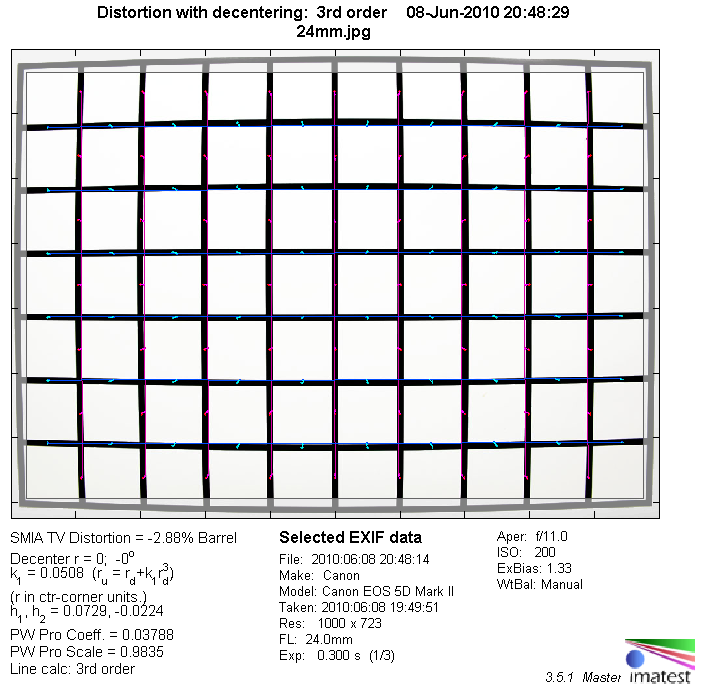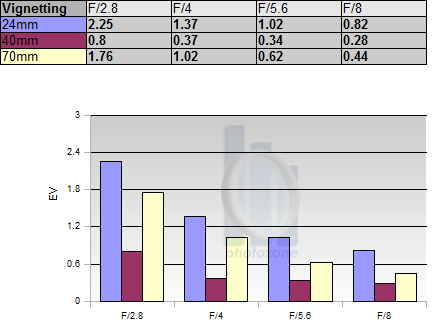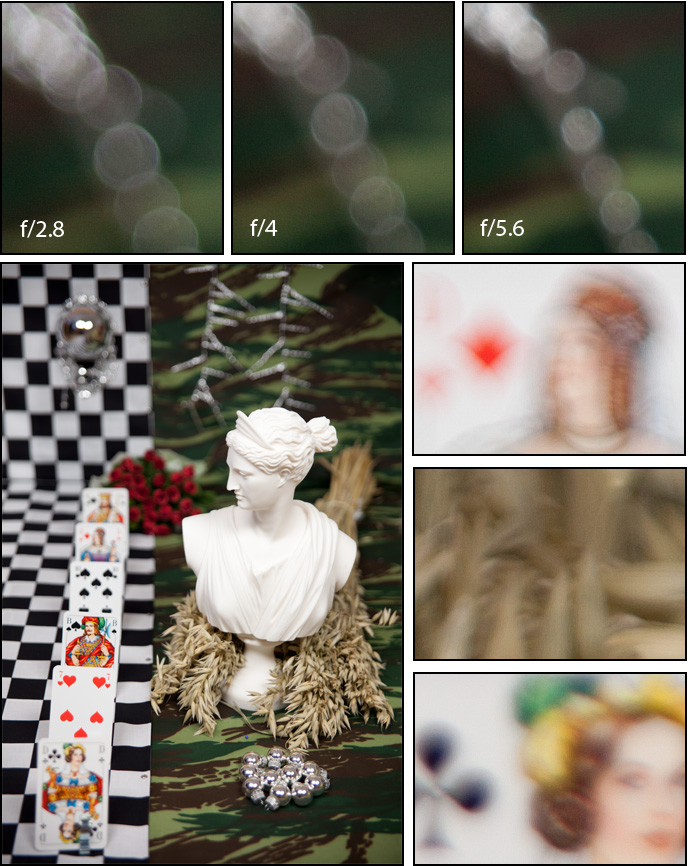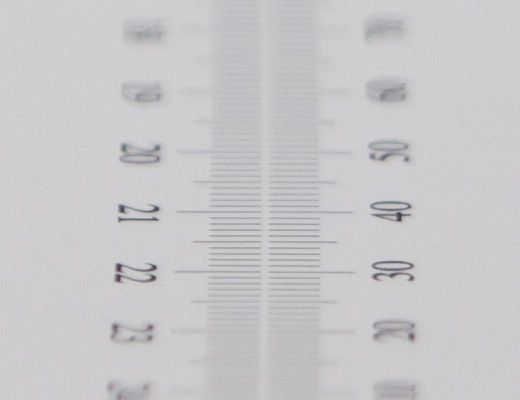|
Sigma AF 24-70mm f/2.8 EX DG HSM - Full Format Review / Test Report - Analysis |
|
Lens Reviews -
Canon EOS (Full Format)
|
|
Page 2 of 3

Distortion
At 24 mm the lens shows a significant amount of barrel distortion (~2.9%), which flips over to a slight pincushion type (~1.2%) at 70mm. At 40 mm the distortion is down to ~0.1%, which can be considered distortion-free for most photographic applications. This is all typical for a lens in this class.
|
Move the mouse cursor over the focal length text marks below to observe the respective distortion
|
| 24mm |
40mm |
70mm |
|

|
The chart above has a real-world size of about 120x80cm.
Vignetting
At 24mm f/2.8 the amount of vignetting is very pronounced but can be decreased by stopping down. However, even stopped down to f/8 light falloff remains a bit on the high side and can still be field relevant. Things look similar albeit slight better at 70mm - very visible vignetting wide open but stopping down helps to decrease the amount considerably. At 40mm vignetting is basically no issue except maybe wide open. Regarding its ultra-large front element we hoped that the lens performed a little better here.
Please note that the vignetting figures are different compared to the equivalent test on the Nikon D3x. Unlike for the MTF data we're using standard camera JPEGs for the vignetting analysis. The D3x has a rather moderate contrast/gradation curve here so the Nikon figures are correspondingly "better". Assuming an identical contrast setting the figures would be identical plus/minus a little bit due to the differen micro-lenses on the sensors.

MTF (resolution)
The lens delivered mixed resolution figures on the EOS 5D II. At 24mm the center resolution is already very high at f/2.8 and reaches excellent levels from f/4 onwards. The border quality is on a good level at large apertures and improves to very good results from f/5.6 onwards. Things aren't all that impressive in the extreme corners though - they are soft all the way up to f/8 and only really acceptable at f/11. Field curvature plays no role here nor at the other focal lengths.
The sweet spot of the lens is in its middle range. The border quality is very good at all tested apertures. The corners are still soft at max. aperture but they reach very good levels from f/5.6 onwards.
The lens is generally a bit softer at 70mm @ f/2.8 but it gets really snappy when stopping down to f/5.6 with an excellent center, very good borders and good corners.
The tested sample was quite well centered which explains the difference to the corresponding Nikon test.
Please note that the MTF results are not directly comparable across the different systems!
Below is a simplified summary of the formal findings. The chart shows line widths per picture height (LW/PH) which can be taken as a measure for sharpness.
If you want to know more about the MTF50 figures you may check out the corresponding Imatest Explanations
Chromatic Aberrations (CAs)
Chromatic aberrations (color shadows at harsh contrast transitions) very well controlled and not field relevant at all tested aperture settings and focal lengths. Interestingly this is quite different compared to our Nikon test - probably also a side-effect of the better centering of this Canon-mount samples.

Bokeh
A standard zoom is not primarily targeted a portraits, however being a fast lens it allows for good subject separation and thus the quality of out-of-focus blur is certainly of interest. We looked at bokeh with our standard test scene at 70mm focal length, which is closest to classic head to shoulder portrait lenses. Field tests showed that the lens delivers very similar bokeh at all focal lengths, though.
Good news first: the blur in front of the focal plane is very smooth. Unfortunately things look a lot worse behind the focal plane, which is what most photographers a more interested in. As you can see below, the blur is rather nervous and produces ugly outlines and halos.
Thanks to 9 rounded aperture blades, background highlights remain their circular shape throughout the whole aperture range. However, they show significant outlining. So the only way to get very smooth background blur with this lens is to make sure you have a massive distance between your main subject and the background. In summary, this is certainly disappointing.

Bokeh Fringing / Longitudinal Chromatic Aberrations (LoCA)
LoCAs (non-coinciding focal planes of the various colors) are a common issue with relatively fast glass - they are often noticeable in out-of-focus halos: magenta (red + blue) in front the focus point and green beyond.
At its longest focal length of 70 mm (which we used here) the Sigma shows a rather low amount of LoCAs wide open, which is considerably reduced by f/4 already and no longer field relevant at f/5.6 and beyond.
|
Move the mouse cursor over the f-stop marks below to observe the respective LoCAs
|
| f/2.8 |
f/4.0 |
f/5.6 |
|

|
|